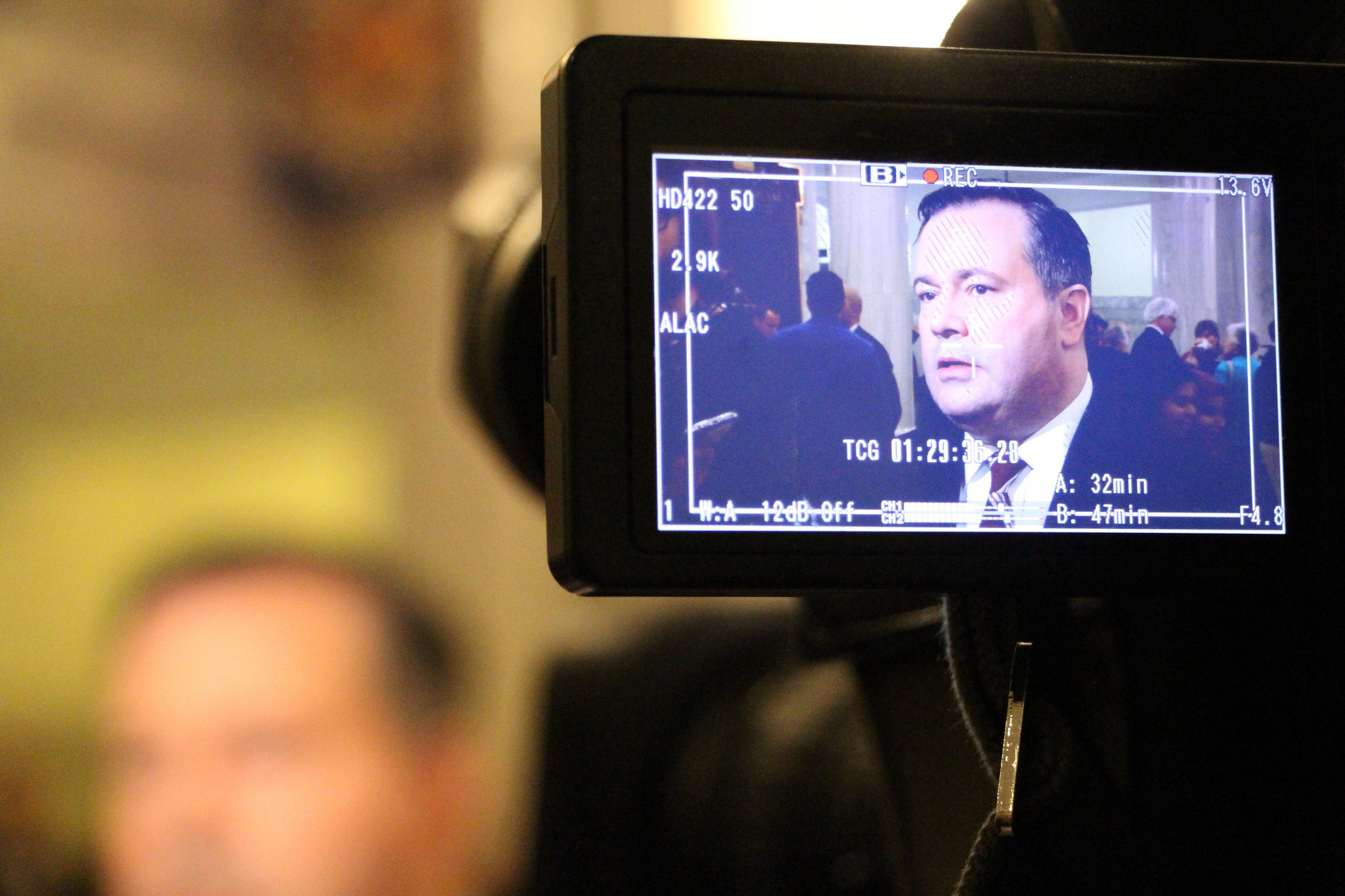Perhaps it’s just me, but with each passing day Jason Kenney reminds me a little more of Richard M. Nixon, the talented but deeply flawed American president who in 1973 resigned from office rather than be impeached by the House of Representatives.
Last night’s exposé by the CBC’s Edmonton investigative journalists, while perhaps not technically as devastating as their previous story that the RCMP is now investigating the financial goings on during Jeff Callaway’s 2017 “Kamikaze” United Conservative Party leadership campaign, brightly illuminates Mr. Kenney’s Nixonian characteristics.
The detailed CBC report by journalists Charles Rusnell, Jennie Russell and Alison Dempster published a little before midnight is based on what they refer to as a leaked cache of documents and shows how Kenney’s leadership campaign team worked hand in glove with the supposedly rival Jeff Callaway campaign to knock off the strong challenge by Brian Jean, former leader of the Wildrose Party.
This directly contradicts statements Kenney, and his party officials and supporters, made at the time and more recently.
The CBC shows how the two campaigns were effectively joined at the hip, with the Kenney crew providing the Callaway camp “with resources including strategic political direction, media and debate talking points, speeches, videos, and attack advertisements, all aimed at undermining Kenney’s main political rival, Brian Jean.”
In other words, in a sneaky way, they were both part of the same campaign. This is certainly unethical — and if I were a UCP supporter, I’d be furious — but on its own it’s probably not illegal.
The illegalities being investigated by the Office of the Election Commissioner and now apparently by the RCMP seem to have to do with how Callaway’s Kamikaze campaign was financed, and maybe whether illegal efforts were made to interfere with the investigation. This, presumably, will become clear in the fullness of time.
In the meantime, the CBC story provides new insights into the Kenney campaign’s modus operandi — including a carefully developed timeline to sow seeds of doubt about Jean, needle him into losing his temper and then play embarrassing recordings if successful, and then have Callaway withdraw from the race at the moment that would cause maximum harm to the Jean campaign.
In addition, these new revelations raise new questions, many being asked this morning on social media. For example, were the Kenney campaign’s donations in kind to Callaway’s effort properly reported to Elections Alberta as the contributions they obviously were?
The irony is that like President Nixon in the 1972 U.S. Presidential campaign, Kenney almost certainly could have beaten his principal opponent without cheating. It sure starts to look, though, as if he just couldn’t help himself.
Likewise Kenney or someone in his campaign apparently couldn’t resist trying to cover-up what had been done.
As U.S. Senator Howard Baker, one of the principal figures in the so-called Watergate scandal that undid President Nixon, observed, “it is almost always the cover-up rather than the event that causes trouble.” The Watergate Hotel and complex in Washington D.C. was where burglars working for the Nixon campaign were caught breaking into the Democratic National Committee headquarters.
Perhaps, those who don’t remember this elementary bit of historical advice are doomed to run afoul of it again!
Of course, in fairness, it’s important to note that both Callaway and Kenney continue to deny anything like this went on. However, as the CBC reminded its readers, Kenney told reporters on Friday that the RCMP investigation is “not about our campaign; it is about someone else’s leadership campaign from 18 months ago.”
The problem with that, of course, is that the CBC’s latest report strongly suggests that for all intents and purposes, someone else’s campaign was effectively part of Kenney’s.
No wonder several of Callaway’s campaigners ended up working for Kenney after he assumed the mantle of party leadership and was elected to the Legislature.
No one yet has the answer to the important question about what Kenney knew, and when he knew it — unless, of course, the CBC has another story ready to release in a day or two.
Kenney’s slight resemblance to Mr. Nixon was first remarked upon by your blogger in a Calgary Herald feature on May 9, 1993.* It would seem, however, that the similarity runs deeper than the five o’clock shadow he noted then.
Happy St. Patrick’s Day!
* This piece is not available online unless you have access to a newspaper database, like Proquest Canadian Newsstream available through many public libraries in Alberta. The Herald’s headline was “‘Enfant terrible’ sounds the alarm.”
This post also appears on David Climenhaga’s blog, AlbertaPolitics.ca.
Image: Dave Cournoyer/Flickr
Help make rabble sustainable. Please consider supporting our work with a monthly donation. Support rabble.ca today for as little as $1 per month!





